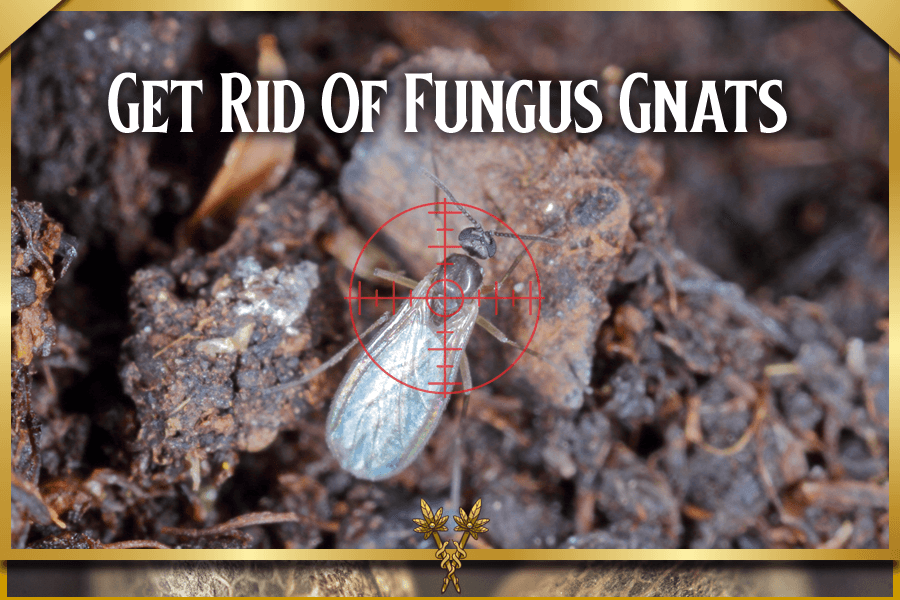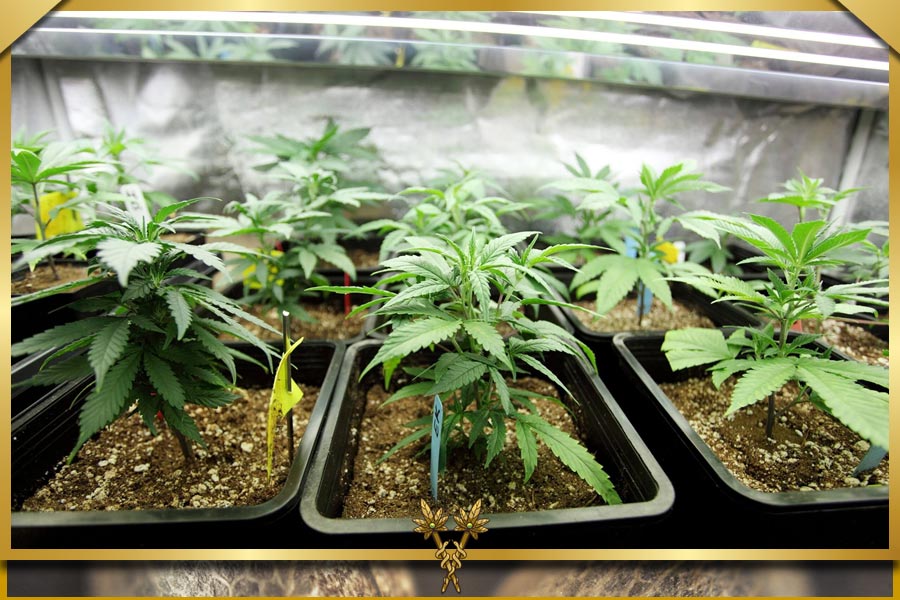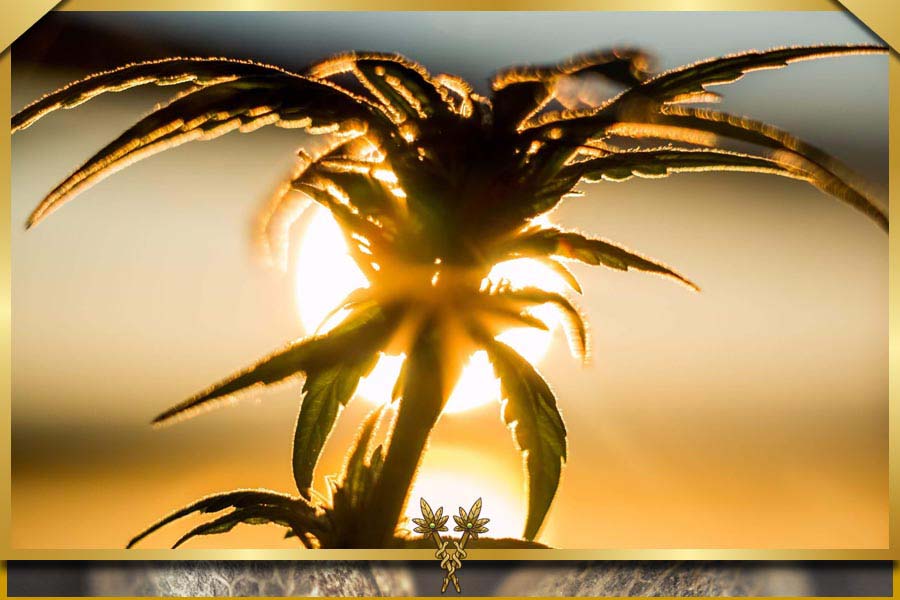You might observe hair-like growths forming on the calyxes of marijuana plants. Cannabis pistils give you a lot of information about your marijuana crops.
Discover how to identify the gender of marijuana plants by looking at the pistils during the plant’s early life cycles and why they’re significant. Learn how to tell when plants are ready to be harvested during the late flowering stage based on their various colours.
Understand everything there is to know about cannabis pistils and why marijuana growers must be able to recognise them.
What do weed pistils do?
The reproductive organ of a female cannabis plant, the pistil, is found in the centre of the flower. Its primary activities are seed production and pollination.
Three components comprise a weed pistil: an ovary, a stigma, and a style. They resemble the long, fine hairs that emerge from the calyx of marijuana plant flowers. On a weed plant, pistils typically form in the early vegetative stage.
Male marijuana plants can pollinate female marijuana pistils with their pollen. Feminised plants concentrate their energy on making seeds rather than resinous flowers.
The significance of cannabis pistils
Pistils from cannabis plants play a crucial role in identifying the genders of our marijuana crops. They also point out when to harvest during the final stage of flowering.
Let’s examine pistil development in young and mature cannabis plants and gender identification in marijuana crops.
Using the cannabis pistil to sex plants
A quick method to identify the genders of your weed shrubs is to use the pistil on the weed plant. Congratulations are in order if you spot cannabis pistils on your crops during the early vegetative cycle. Your plants are female.
Three sexes of marijuana plants can emerge male, female, and hermaphrodite (intersex). The majority of growers who purchase cannabis seeds in Australia choose feminised varieties. Typically, these weed plants yield the THC-rich buds we are familiar with.
If female plants are nearby, male weed crops can pollinate them by growing pollen sacks that swell and burst. Cannabis pistils are visible in female and hermaphrodite marijuana shrubs, but the latter can also develop male sex organs, or “nanners,” to impregnate your ladies.
The development of nanners in your female may be brought on by other factors. In female crops, sex changes can result from light and heat stress. To help prevent the development of marijuana plants that are hermaphrodites, it is crucial to keep an eye on them during the flowering stage.
Pistils from weed and young cannabis plants
Cannabis growers know that male plants typically produce flowers earlier than female plants. Around 4-6 weeks after germination, most seasoned growers can distinguish between male and female plants by observing the pistil.
Keep a close eye out for pistils on the crops as they enter the vegetative stage. Early cannabis pistils are noticeable and appear close to the top of the plant. Examining your weed shrubs is essential because they can also stick out from random nodes.
Stipules that resemble green hairs grow along with pre-flowers. Stipules do not lead to flowers but instead to leaves, though some marijuana growers may mistake them for pistils. In the vegetative stage, distinguishing females from males may take up to 8 weeks.
Mature cannabis plants and cannabis pistils
Compared to feminised and regular crops, marijuana plants grown from autoflowering and fast-growing weed seeds typically flower sooner. The cannabis pistils consequently emerge from the flowers and rapidly change colour. They transform from white to sunset reds and oranges in just a few days.
Your feminised marijuana plants’ pistil colours are a great way to monitor how they are doing in the flowering stage. There are three main phases of flowering:
- Early stages of flowering: Before they start changing colour, the pistils on your marijuana plants are typically white.
- In the middle of the flowering cycle, your cannabis plants begin to display pistils that are red, orange, or pink.
- Late flowering stage: The pistils of the weed turn a more striking and deep shade of red, amber, or brown.
How can weed plants’ pistils help in harvesting?
Marijuana pistils are a great visual indicator of when the buds are ready for harvest. The colourful pistils that emerge from female cannabis plants during the late flowering stage are visible to the untrained eye.
Many cannabis growers judge the end of their marijuana crops’ life cycles based on the colours of their pistils. If the pistils on your plants are still white or have faint orange or pink hues, your flowers aren’t quite mature enough to be harvested.
The colour of the cannabis pistils can become deeper and more vibrant when exposed to the night. It is time to harvest those buds when the pistils are 3/4 red, orange, or brown and beginning to curl inward.
Pistils on cannabis plants and other telltale signs, such as sticky buds and shimmering trichomes, are excellent indicators that harvest time has arrived.
Weed pistils: crucial signs of your plants’ development
Cannabis plants’ pistils are a crucial component that assists in gender differentiation. They are essential for cannabis breeders and growers who want to separate male and female shrubs or pollinate them to produce new strains.
The weed pistils’ varying hues also make it easier for us to track a plant’s development throughout the flowering cycle. The lovely red and orange hues help us determine when to harvest and add to the appeal of cannabis.
Stigma vs. pistil
Cannabis plants have white, hair-like structures on their buds when they are just starting to flower; these structures are stigmas, which are frequently mistaken for pistils. The pistil has stigmas, the only visible parts because the rest of the pistil is hidden by a tiny leaf called a bract. The cannabis community uses the term “pistillate” to describe female cannabis plants, which are more valuable commercially because they produce colas with buds rich in cannabinoids.
You can learn more about marijuana cultivation from Mediseed Man’s blogs. We are experts at growing marijuana and can help you make the most of your growing experience.


